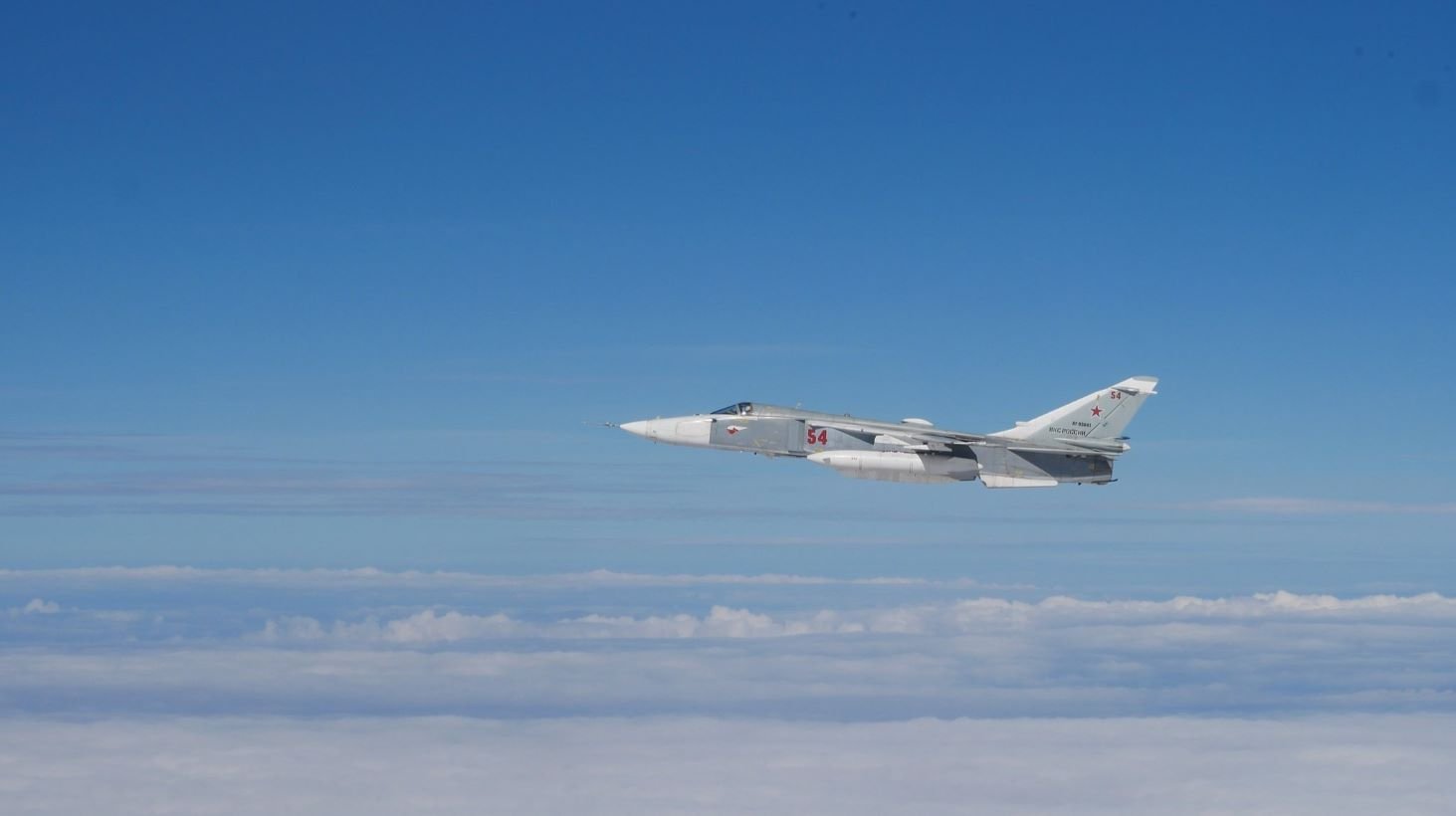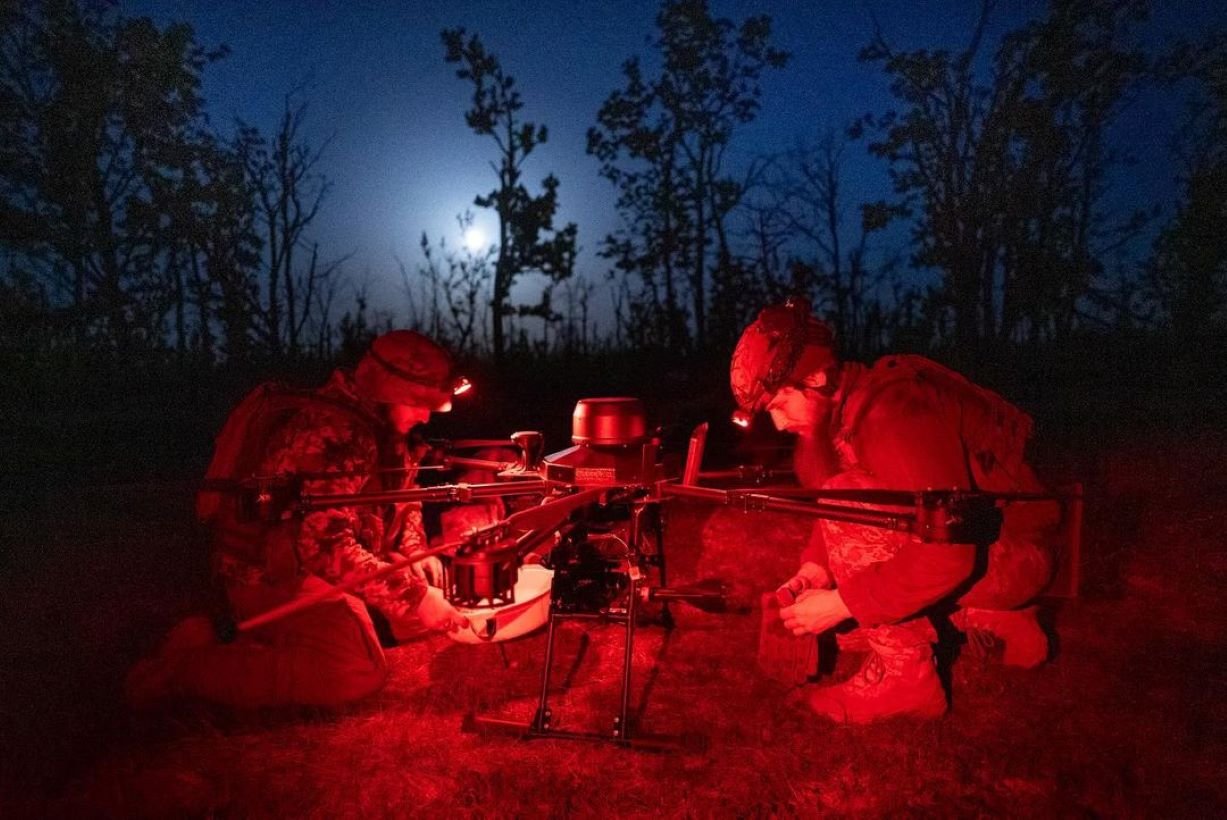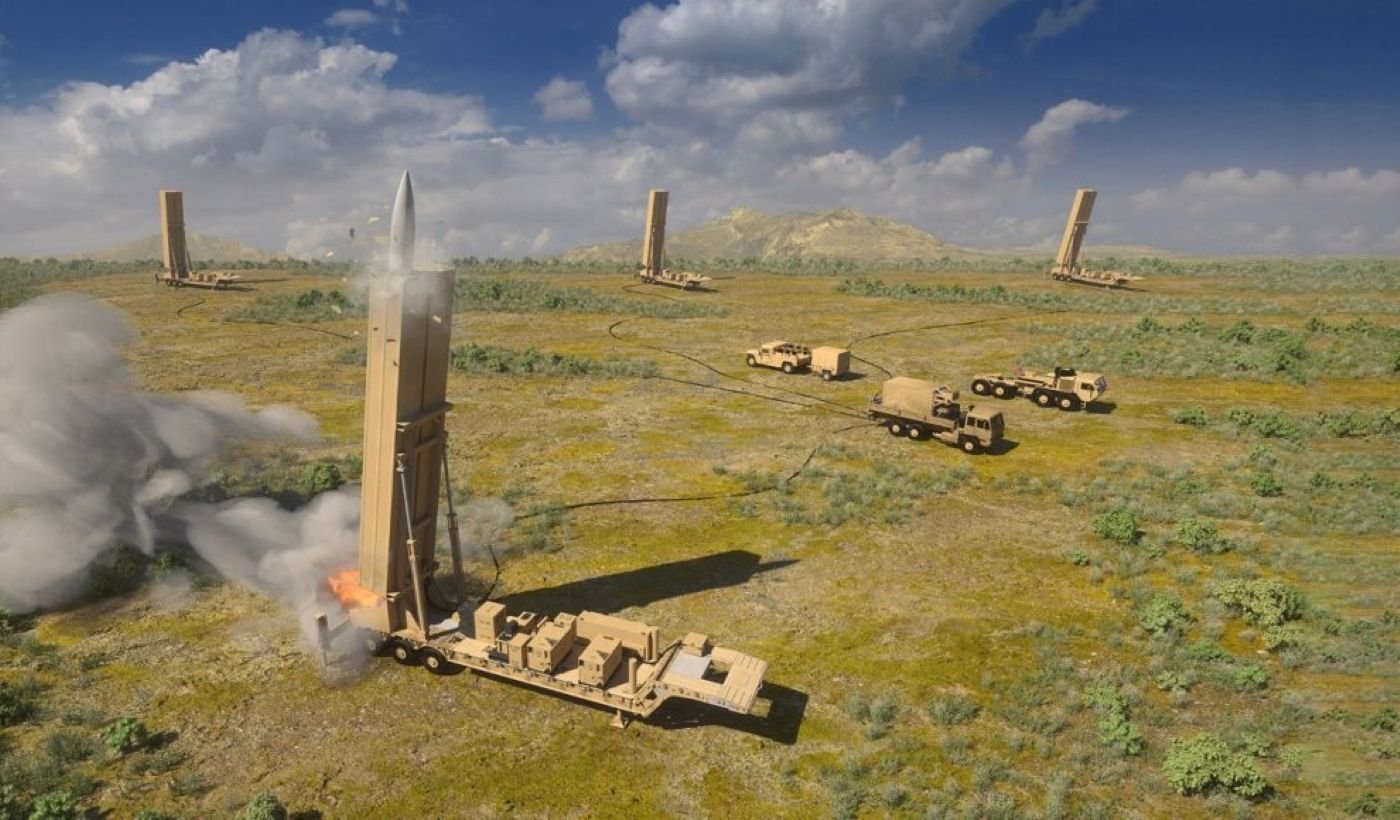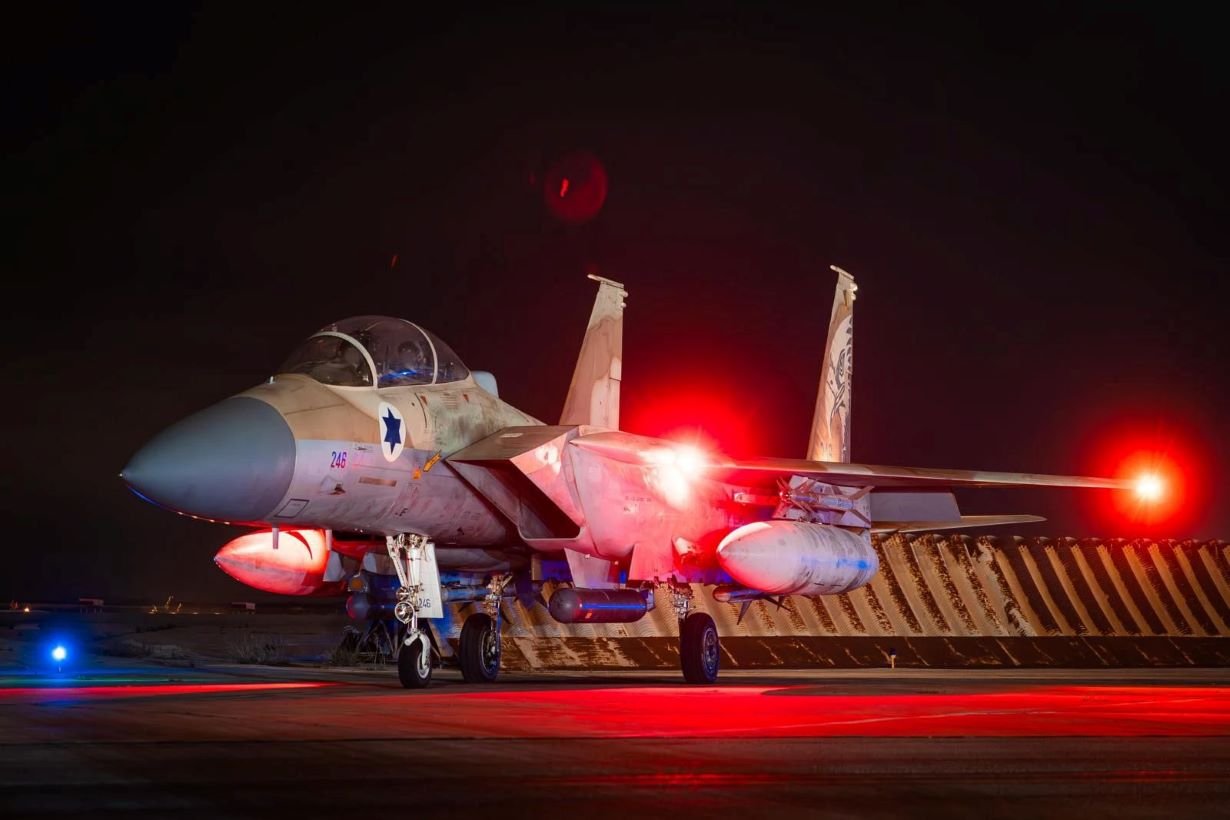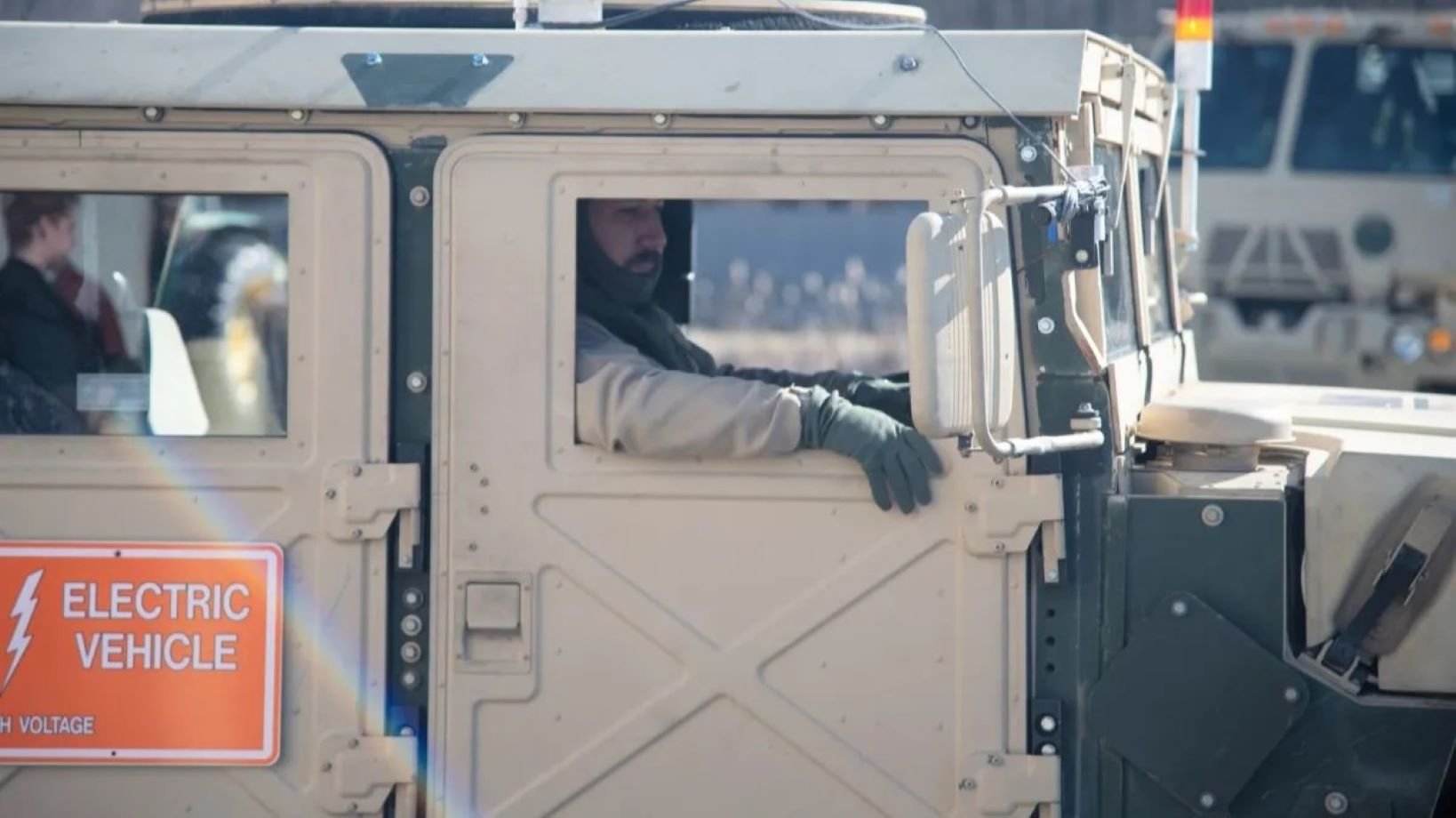-
Posts
790 -
Joined
-
Last visited
Content Type
Profiles
Uncrowned Armory News
Prepping Cookbook
Conspiracy Theories
Uncrowned Tactical Sports News
Prepping
Forums
Events
Everything posted by Uncrowned Guard
-

Vortex’s Defender-XL Micro Red Dot Unveiled
Uncrowned Guard posted an article in Firearm Accessories
Revolutionizing Precision In the world of competitive shooting and dynamic tactical scenarios, precision is paramount. Vortex Optics understands this need and has introduced the Defender-XL Micro Red Dot, a new product trying to be a game-changer in optical solutions for firearms enthusiasts. Enhanced Field of View The Defender-XL boasts an ultra-wide sight window, significantly enhancing the field of view. This feature is crucial for shooters who rely on speed and accuracy. The aspherical lens design ensures a distortion-free sight picture, allowing for truer colors and a more natural visual experience. With its robust 7075 aluminum housing, the Defender-XL promises strength and corrosion resistance, ensuring longevity and reliability in the most challenging environments. Innovation Meets Durability Designed to withstand the unexpected drops and rigors of dynamic shooting, the Defender-XL is not just about a larger glass for your gun; it's about providing a durable, reliable tool that can handle the pressures of competitive shooting. The advanced Shockshield™ polymer insert protects the red dot from hard, daily abuse, while the Fast-Rack™ textured front face adds grip for racking slides. With adjustable brightness settings and a motion-activated illumination, the Defender-XL is tailored for instant readiness and prolonged battery life. In conclusion, the Vortex Optics Defender-XL Micro Red Dot is a testament to the brand's commitment to innovation and quality at a budget level. It's a versatile optic that meets the demands of serious competitors and recreational shooters alike, offering more glass and more class to any firearm it adorns. For those interested in upgrading their shooting experience, the Defender-XL is a worthy investment.-
- vortex optics
- defender-xl micro red dot
- (and 3 more)
-
In a significant policy shift, the United States and its Western allies have granted Ukraine permission to use supplied weaponry to target military installations within Russia's borders, specifically near the Kharkiv region. This move comes as a response to the escalating aggression and is seen as a measure to bolster Ukraine's defensive capabilities in the face of relentless attacks. Strategic Authorization Recent reports indicate that the Biden administration has authorized Ukraine to strike military targets inside Russia, a decision that marks a major reversal in the previously held stance. This authorization is strictly limited to the Kharkiv border area, where Russian forces have intensified their military actions. The U.S. official statement confirms that the supplied weapons are to be used solely for counter-fire purposes against Russian forces attacking or preparing to attack Ukrainian positions. Defensive Posture The decision to allow Ukraine to use Western arms for strikes inside Russia underscores the dire situation in the Kharkiv region, Ukraine's second-largest city. The city has been under severe bombardment, leading to a strategic necessity for Ukraine to possess the capability to respond effectively. The weapons, which include advanced rocket systems, are intended to provide Ukraine with the means to defend itself against the onslaught and to disrupt Russian military activities near the border. International Implications This development has significant implications for the ongoing conflict and the international community's involvement. While the permission is limited to military targets and aims to prevent further Russian advances, it represents a shift in the dynamic of Western support for Ukraine. The move has been met with varied reactions, with some viewing it as a necessary step in supporting Ukraine's sovereignty, while others express concern over the potential escalation of hostilities. The unfolding situation continues to be monitored closely, as the world watches to see how this new level of authorization will impact the conflict and the broader geopolitical landscape. View full article
-
- strategic authorization
- ukraine conflict
- (and 6 more)
-
In a significant policy shift, the United States and its Western allies have granted Ukraine permission to use supplied weaponry to target military installations within Russia's borders, specifically near the Kharkiv region. This move comes as a response to the escalating aggression and is seen as a measure to bolster Ukraine's defensive capabilities in the face of relentless attacks. Strategic Authorization Recent reports indicate that the Biden administration has authorized Ukraine to strike military targets inside Russia, a decision that marks a major reversal in the previously held stance. This authorization is strictly limited to the Kharkiv border area, where Russian forces have intensified their military actions. The U.S. official statement confirms that the supplied weapons are to be used solely for counter-fire purposes against Russian forces attacking or preparing to attack Ukrainian positions. Defensive Posture The decision to allow Ukraine to use Western arms for strikes inside Russia underscores the dire situation in the Kharkiv region, Ukraine's second-largest city. The city has been under severe bombardment, leading to a strategic necessity for Ukraine to possess the capability to respond effectively. The weapons, which include advanced rocket systems, are intended to provide Ukraine with the means to defend itself against the onslaught and to disrupt Russian military activities near the border. International Implications This development has significant implications for the ongoing conflict and the international community's involvement. While the permission is limited to military targets and aims to prevent further Russian advances, it represents a shift in the dynamic of Western support for Ukraine. The move has been met with varied reactions, with some viewing it as a necessary step in supporting Ukraine's sovereignty, while others express concern over the potential escalation of hostilities. The unfolding situation continues to be monitored closely, as the world watches to see how this new level of authorization will impact the conflict and the broader geopolitical landscape.
-
- strategic authorization
- ukraine conflict
- (and 6 more)
-
In a recent display of aerial vigilance, German Eurofighters were scrambled to intercept a Russian reconnaissance jet over the Baltic Sea. This incident marks the latest in a series of engagements as NATO forces maintain a watchful eye over European skies amid ongoing tensions. A Swift Response The German Air Force swiftly responded to the presence of a Russian IL-20 spy plane detected in international airspace. The Eurofighters, launched from Ämari Air Base in Estonia, successfully identified and shadowed the Russian aircraft, which was accompanied by two Sukhoi Su-27 fighter jets. The operation was part of NATO's Baltic Air Policing mission, a collective effort to secure the airspace of member nations that lack their own air defense capabilities. Routine Yet Crucial While such interceptions are routine, they are a critical component of NATO's collective defense strategy. The alliance's air forces are regularly called upon to identify and escort military aircraft that do not comply with international flight regulations, such as flying without transponder signals. These missions are essential for maintaining the integrity of NATO airspace and serve as a deterrent to any potential aggression. Diplomatic Implications The interception comes at a time of heightened diplomatic strain between Russia and Western nations. NATO's air policing activities are not only a matter of security but also carry significant diplomatic weight. Each interception underscores the alliance's commitment to defending its members and sends a clear message regarding the seriousness with which it views any military provocation. This event underscores the ongoing commitment of NATO forces to safeguard the skies above Europe and reflects the readiness and cooperation among member nations in responding to potential threats. View full article
-

Sky Guardians: German Eurofighters Intercept Russian Spy Plane
Uncrowned Guard posted an article in Military News
In a recent display of aerial vigilance, German Eurofighters were scrambled to intercept a Russian reconnaissance jet over the Baltic Sea. This incident marks the latest in a series of engagements as NATO forces maintain a watchful eye over European skies amid ongoing tensions. A Swift Response The German Air Force swiftly responded to the presence of a Russian IL-20 spy plane detected in international airspace. The Eurofighters, launched from Ämari Air Base in Estonia, successfully identified and shadowed the Russian aircraft, which was accompanied by two Sukhoi Su-27 fighter jets. The operation was part of NATO's Baltic Air Policing mission, a collective effort to secure the airspace of member nations that lack their own air defense capabilities. Routine Yet Crucial While such interceptions are routine, they are a critical component of NATO's collective defense strategy. The alliance's air forces are regularly called upon to identify and escort military aircraft that do not comply with international flight regulations, such as flying without transponder signals. These missions are essential for maintaining the integrity of NATO airspace and serve as a deterrent to any potential aggression. Diplomatic Implications The interception comes at a time of heightened diplomatic strain between Russia and Western nations. NATO's air policing activities are not only a matter of security but also carry significant diplomatic weight. Each interception underscores the alliance's commitment to defending its members and sends a clear message regarding the seriousness with which it views any military provocation. This event underscores the ongoing commitment of NATO forces to safeguard the skies above Europe and reflects the readiness and cooperation among member nations in responding to potential threats. -
A Fresh Take on Home Security Mossberg International, a name synonymous with robust firearms, has once again made headlines with the introduction of the Silver Reserve Eventide HS12. This cut-down double-barrel shotgun is designed specifically for home defense, offering a unique blend of traditional design and modern tactical features. The Eventide HS12 is part of Mossberg's prestigious Silver Reserve series, which has been providing reliable firearms for various applications, from hunting to sport shooting. Tailored for Protection The Eventide HS12 stands out with its compact 18.5" barrel length and cylinder bore, making it an ideal choice for the close quarters of home defense. The shotgun features dual locking lugs for enhanced durability and a tang-mounted safety/barrel selector for ease of use. Additionally, the chrome-lined barrels and chambers are not only corrosion-resistant but also ensure a longer lifespan for the firearm. The inclusion of shell extractors, a logo-engraved receiver, and synthetic stocks and forends further attest to the shotgun's quality and attention to detail. Accessibility and Ease of Use Understanding the need for quick and efficient handling in emergency situations, Mossberg has equipped the HS12 with top and under-barrel accessory rails, allowing for the attachment of various accessories such as lights and optics. The elevated front fiber optic sight provides quick target acquisition, which is crucial in high-stress scenarios. With an overall length of 36" and a weight of 6.75 lbs, the HS12 is both manageable and maneuverable, making it a practical choice for homeowners seeking a reliable defensive tool. In conclusion, the Mossberg Silver Reserve Eventide HS12 represents a significant advancement in home defense weaponry. Its thoughtful design, tailored features, and Mossberg's century-long legacy of quality craftsmanship make it a noteworthy addition to any home security plan. For more information on the HS12 and other Mossberg products, interested individuals can visit the official Mossberg website. View full article
-
- mossberg international
- silver reserve eventide hs12
- (and 3 more)
-
A Fresh Take on Home Security Mossberg International, a name synonymous with robust firearms, has once again made headlines with the introduction of the Silver Reserve Eventide HS12. This cut-down double-barrel shotgun is designed specifically for home defense, offering a unique blend of traditional design and modern tactical features. The Eventide HS12 is part of Mossberg's prestigious Silver Reserve series, which has been providing reliable firearms for various applications, from hunting to sport shooting. Tailored for Protection The Eventide HS12 stands out with its compact 18.5" barrel length and cylinder bore, making it an ideal choice for the close quarters of home defense. The shotgun features dual locking lugs for enhanced durability and a tang-mounted safety/barrel selector for ease of use. Additionally, the chrome-lined barrels and chambers are not only corrosion-resistant but also ensure a longer lifespan for the firearm. The inclusion of shell extractors, a logo-engraved receiver, and synthetic stocks and forends further attest to the shotgun's quality and attention to detail. Accessibility and Ease of Use Understanding the need for quick and efficient handling in emergency situations, Mossberg has equipped the HS12 with top and under-barrel accessory rails, allowing for the attachment of various accessories such as lights and optics. The elevated front fiber optic sight provides quick target acquisition, which is crucial in high-stress scenarios. With an overall length of 36" and a weight of 6.75 lbs, the HS12 is both manageable and maneuverable, making it a practical choice for homeowners seeking a reliable defensive tool. In conclusion, the Mossberg Silver Reserve Eventide HS12 represents a significant advancement in home defense weaponry. Its thoughtful design, tailored features, and Mossberg's century-long legacy of quality craftsmanship make it a noteworthy addition to any home security plan. For more information on the HS12 and other Mossberg products, interested individuals can visit the official Mossberg website.
-
- mossberg international
- silver reserve eventide hs12
- (and 3 more)
-
Ukrainian Drone Sets Record in Strike Against Russian Radar In a daring operation, Ukraine's intelligence forces have achieved a new milestone in unmanned aerial warfare. A Ukrainian drone traveled over 1,800 kilometers to strike a radar station in Orsk, located in Russia's Orenburg region. This feat sets a new record for the longest distance covered by kamikaze drones in combat. Strategic Target: Voronezh-M Radar System The target of this unprecedented attack was the Voronezh-M radar system, a key component of Russia's early-warning surveillance network. The system, which entered service in 2017, is designed to detect strategic weapons such as intercontinental ballistic and cruise missiles. Despite its advanced capabilities, the radar was not immune to the ingenuity of Ukrainian forces. Implications for Regional Security This operation underscores the evolving nature of modern warfare, where distance is no longer a safeguard against strikes. The successful use of a long-range drone to hit a critical military asset deep within enemy territory marks a significant shift in the balance of power. It also highlights the increasing role of technology in achieving military objectives. The Ukrainian attack did not result in any reported casualties or infrastructure damage, but it sends a clear message about the reach and resolve of Ukraine's military strategy. View full article
-
- ukrainian drone strike
- russian radar system
- (and 3 more)
-
Ukrainian Drone Sets Record in Strike Against Russian Radar In a daring operation, Ukraine's intelligence forces have achieved a new milestone in unmanned aerial warfare. A Ukrainian drone traveled over 1,800 kilometers to strike a radar station in Orsk, located in Russia's Orenburg region. This feat sets a new record for the longest distance covered by kamikaze drones in combat. Strategic Target: Voronezh-M Radar System The target of this unprecedented attack was the Voronezh-M radar system, a key component of Russia's early-warning surveillance network. The system, which entered service in 2017, is designed to detect strategic weapons such as intercontinental ballistic and cruise missiles. Despite its advanced capabilities, the radar was not immune to the ingenuity of Ukrainian forces. Implications for Regional Security This operation underscores the evolving nature of modern warfare, where distance is no longer a safeguard against strikes. The successful use of a long-range drone to hit a critical military asset deep within enemy territory marks a significant shift in the balance of power. It also highlights the increasing role of technology in achieving military objectives. The Ukrainian attack did not result in any reported casualties or infrastructure damage, but it sends a clear message about the reach and resolve of Ukraine's military strategy.
-
- ukrainian drone strike
- russian radar system
- (and 3 more)
-
In a landmark agreement, Poland and the Baltic states have unveiled plans for a protective 'drone wall' aimed at bolstering their defenses amidst growing security concerns. This strategic move marks a significant step in regional cooperation and defense technology innovation. Unprecedented Cooperation Leaders from Poland, Lithuania, Latvia, and Estonia have reached a consensus on the creation of a state-of-the-art aerial defense system. The initiative, which has been in discussion among NATO allies, seeks to establish a 'drone wall' along the Eastern European borders. This defensive barrier will be equipped with advanced drones capable of surveillance and protection against potential threats. Technological Fortification The 'drone wall' is not just a physical barrier but a network of unmanned aerial vehicles (UAVs) that will monitor and secure the vast border territories. These drones will be integrated with anti-drone systems to neutralize any unauthorized or hostile UAVs. The initiative is a response to the increasing use of drones in warfare, as seen in the ongoing conflicts in Eastern Europe. Future-Proofing Borders As the project moves from concept to reality, the involved nations are working closely to develop the infrastructure needed to support this ambitious endeavor. The 'drone wall' represents a forward-thinking approach to national security, combining cutting-edge technology with international collaboration. It's a clear message that the Baltic states and Poland are committed to safeguarding their sovereignty and ensuring peace in the region. This initiative is not only a significant advancement in defense strategies but also a testament to the unity and resolve of European nations in the face of evolving threats. The 'drone wall' is expected to become a critical component of the collective security measures protecting the Eastern flanks of NATO. View full article
-
- baltic-drone wall
- defense technology
- (and 8 more)
-

A New Era of Defense: The Baltic-Drone Wall Initiative
Uncrowned Guard posted an article in Military News
In a landmark agreement, Poland and the Baltic states have unveiled plans for a protective 'drone wall' aimed at bolstering their defenses amidst growing security concerns. This strategic move marks a significant step in regional cooperation and defense technology innovation. Unprecedented Cooperation Leaders from Poland, Lithuania, Latvia, and Estonia have reached a consensus on the creation of a state-of-the-art aerial defense system. The initiative, which has been in discussion among NATO allies, seeks to establish a 'drone wall' along the Eastern European borders. This defensive barrier will be equipped with advanced drones capable of surveillance and protection against potential threats. Technological Fortification The 'drone wall' is not just a physical barrier but a network of unmanned aerial vehicles (UAVs) that will monitor and secure the vast border territories. These drones will be integrated with anti-drone systems to neutralize any unauthorized or hostile UAVs. The initiative is a response to the increasing use of drones in warfare, as seen in the ongoing conflicts in Eastern Europe. Future-Proofing Borders As the project moves from concept to reality, the involved nations are working closely to develop the infrastructure needed to support this ambitious endeavor. The 'drone wall' represents a forward-thinking approach to national security, combining cutting-edge technology with international collaboration. It's a clear message that the Baltic states and Poland are committed to safeguarding their sovereignty and ensuring peace in the region. This initiative is not only a significant advancement in defense strategies but also a testament to the unity and resolve of European nations in the face of evolving threats. The 'drone wall' is expected to become a critical component of the collective security measures protecting the Eastern flanks of NATO.-
- baltic-drone wall
- defense technology
- (and 8 more)
-
U.S. Army Enhances Hypersonic Capabilities In a significant advancement for U.S. military capabilities, the Army has awarded Lockheed Martin a substantial $756 million contract for the development of the Long Range Hypersonic Weapon (LRHW) system. This move marks a pivotal step in modernizing the nation's defense systems with cutting-edge technology. Lockheed Martin: A Step Ahead in Defense Lockheed Martin, a global leader in defense technology, is set to bolster the U.S. Army's arsenal with additional LRHW battery equipment, systems, and software engineering support. The contract also encompasses comprehensive logistics solutions, ensuring the sustainment and future fielding of the hypersonic weapon system. The Future of Warfare The LRHW system represents a new class of ultrafast, maneuverable long-range missiles capable of launching from ground mobile platforms. This system is designed to deploy the common hypersonic All Up Round (AUR), managed by the U.S. Navy's Conventional Prompt Strike (CPS) program, and includes components such as the Army canister, a battery operations center, and transporter erector launchers. With this contract, Lockheed Martin continues its six-decade legacy of hypersonic research and development, affirming its commitment to the U.S. Army and national security. View full article
-
- hypersonic weapons
- military technology
- (and 3 more)
-
U.S. Army Enhances Hypersonic Capabilities In a significant advancement for U.S. military capabilities, the Army has awarded Lockheed Martin a substantial $756 million contract for the development of the Long Range Hypersonic Weapon (LRHW) system. This move marks a pivotal step in modernizing the nation's defense systems with cutting-edge technology. Lockheed Martin: A Step Ahead in Defense Lockheed Martin, a global leader in defense technology, is set to bolster the U.S. Army's arsenal with additional LRHW battery equipment, systems, and software engineering support. The contract also encompasses comprehensive logistics solutions, ensuring the sustainment and future fielding of the hypersonic weapon system. The Future of Warfare The LRHW system represents a new class of ultrafast, maneuverable long-range missiles capable of launching from ground mobile platforms. This system is designed to deploy the common hypersonic All Up Round (AUR), managed by the U.S. Navy's Conventional Prompt Strike (CPS) program, and includes components such as the Army canister, a battery operations center, and transporter erector launchers. With this contract, Lockheed Martin continues its six-decade legacy of hypersonic research and development, affirming its commitment to the U.S. Army and national security.
-
- hypersonic weapons
- military technology
- (and 3 more)
-
Iran's Presidential Helicopter Incident In a dramatic turn of events, the helicopter carrying Iranian President Ebrahim Raisi and his entourage encountered a severe incident, described by state media as a 'hard landing' in the mountainous regions of Iran. The accident has drawn widespread attention and concern for the safety of the president and officials on board. A Sudden Descent The helicopter, part of a convoy, was returning from a visit to the border with Azerbaijan where President Raisi had been inaugurating a dam project. As they traversed the northwest reaches of the country, the aircraft faced adverse weather conditions, including heavy fog, which led to the unexpected and alarming descent. Rescue Efforts Underway Following the incident, at least 40 rescue teams were promptly deployed, including drones and search dogs, to locate and assist the passengers of the helicopter. The challenging weather conditions have made the rescue operations difficult, but the teams are determined to reach the site and ensure the well-being of all individuals involved. Awaiting Updates As of the latest reports, the condition of President Raisi and the other officials remains unclear. The nation and the international community are closely monitoring the situation, awaiting further details and news regarding the safety of Iran's leadership. This developing story will continue to be updated as more information becomes available. View full article
-
- iran
- ebrahim raisi
-
(and 3 more)
Tagged with:
-

Emergency in the Skies: Helicopter Incident Grips Iran
Uncrowned Guard posted an article in Military News
Iran's Presidential Helicopter Incident In a dramatic turn of events, the helicopter carrying Iranian President Ebrahim Raisi and his entourage encountered a severe incident, described by state media as a 'hard landing' in the mountainous regions of Iran. The accident has drawn widespread attention and concern for the safety of the president and officials on board. A Sudden Descent The helicopter, part of a convoy, was returning from a visit to the border with Azerbaijan where President Raisi had been inaugurating a dam project. As they traversed the northwest reaches of the country, the aircraft faced adverse weather conditions, including heavy fog, which led to the unexpected and alarming descent. Rescue Efforts Underway Following the incident, at least 40 rescue teams were promptly deployed, including drones and search dogs, to locate and assist the passengers of the helicopter. The challenging weather conditions have made the rescue operations difficult, but the teams are determined to reach the site and ensure the well-being of all individuals involved. Awaiting Updates As of the latest reports, the condition of President Raisi and the other officials remains unclear. The nation and the international community are closely monitoring the situation, awaiting further details and news regarding the safety of Iran's leadership. This developing story will continue to be updated as more information becomes available.-
- iran
- ebrahim raisi
-
(and 3 more)
Tagged with:
-
In a recent development that has caught the attention of the international community, Russian President Vladimir Putin has made a statement claiming that Russia is not seeking to capture Ukraine's second-largest city, Kharkiv. This announcement comes amidst ongoing tensions and military activities in the region. Putin's Assurance According to reports, President Putin has asserted that the Russian military's current operations are aimed at establishing a "security zone" rather than capturing the city of Kharkiv. This statement was made during his visit to China, where he emphasized the need for security measures along Russia's border region. The Russian leader's comments have been met with skepticism by some, considering the historical context of previous statements that have not always aligned with subsequent actions. Ukraine's Response In response to Putin's claims, Ukrainian officials have maintained a cautious stance. President Volodymyr Zelenskyy has warned of the potential for Russian forces to attempt the capture of Kharkiv, despite the assurances given by Putin. Ukrainian military officials have acknowledged that while the front line has stabilized, there have been Russian occupations of several border villages. The situation remains fluid, with the Ukrainian defense lines being tested by the advancing Russian troops. International Reactions The global community is closely monitoring the situation, with many leaders calling for restraint and a peaceful resolution to the conflict. The United States and European Union have reiterated their support for Ukraine's sovereignty and territorial integrity, urging Russia to cease military actions that could further escalate the situation. Meanwhile, international organizations and humanitarian groups are expressing concern over the potential for increased civilian casualties and displacement should hostilities intensify. In conclusion, the claim by President Putin that Russia is not seeking to capture Kharkiv has added a new dimension to the ongoing conflict in Ukraine. While it provides a glimmer of hope for a de-escalation of military activities, the reality on the ground and the history of the conflict suggest that vigilance and preparedness remain crucial for the Ukrainian defense forces. The international community continues to watch the developments with a keen eye, hoping for a peaceful resolution to the crisis. View full article
-
- russia-ukraine conflict
- kharkiv strategy
- (and 3 more)
-

Putin’s Pledge: Is Kharkiv Safe from Seizure?
Uncrowned Guard posted an article in Ongoing Conflicts
In a recent development that has caught the attention of the international community, Russian President Vladimir Putin has made a statement claiming that Russia is not seeking to capture Ukraine's second-largest city, Kharkiv. This announcement comes amidst ongoing tensions and military activities in the region. Putin's Assurance According to reports, President Putin has asserted that the Russian military's current operations are aimed at establishing a "security zone" rather than capturing the city of Kharkiv. This statement was made during his visit to China, where he emphasized the need for security measures along Russia's border region. The Russian leader's comments have been met with skepticism by some, considering the historical context of previous statements that have not always aligned with subsequent actions. Ukraine's Response In response to Putin's claims, Ukrainian officials have maintained a cautious stance. President Volodymyr Zelenskyy has warned of the potential for Russian forces to attempt the capture of Kharkiv, despite the assurances given by Putin. Ukrainian military officials have acknowledged that while the front line has stabilized, there have been Russian occupations of several border villages. The situation remains fluid, with the Ukrainian defense lines being tested by the advancing Russian troops. International Reactions The global community is closely monitoring the situation, with many leaders calling for restraint and a peaceful resolution to the conflict. The United States and European Union have reiterated their support for Ukraine's sovereignty and territorial integrity, urging Russia to cease military actions that could further escalate the situation. Meanwhile, international organizations and humanitarian groups are expressing concern over the potential for increased civilian casualties and displacement should hostilities intensify. In conclusion, the claim by President Putin that Russia is not seeking to capture Kharkiv has added a new dimension to the ongoing conflict in Ukraine. While it provides a glimmer of hope for a de-escalation of military activities, the reality on the ground and the history of the conflict suggest that vigilance and preparedness remain crucial for the Ukrainian defense forces. The international community continues to watch the developments with a keen eye, hoping for a peaceful resolution to the crisis.-
- russia-ukraine conflict
- kharkiv strategy
- (and 3 more)
-
In recent weeks, the pro-Palestine protests across U.S. universities have not only sparked discussions on geopolitical issues but also given rise to a peculiar scrutiny: the tents at the protest sites. A narrative has emerged suggesting that the presence of identical tents indicates a larger, orchestrated funding behind the movement. This article aims to dissect these claims with a factual lens and encourage a more informed dialogue. The Claim: Identical Tents as Evidence of Conspiracy Photographs from various university protests have been circulated online, highlighting matching tents as alleged proof of a grander scheme. Critics argue that the uniformity of these shelters points to external funding and organization, suggesting a conspiracy that transcends grassroots activism. The Reality: Budget Tents and Consumer Choices A closer examination of the tents in question reveals a different story. The models captured in the photographs are not exclusively identical; rather, they represent a variety of models, albeit with similar appearances. This is not unusual, considering the tents' origin: budget-friendly options readily available at retailers like Walmart. These tents are the most accessible choice for individuals seeking a cost-effective solution for temporary outdoor gatherings, including protests. Statistical Expectation vs. Conspiracy The presence of two to three matching tents among hundreds of protesters is statistically expected rather than indicative of a conspiracy. Given the affordability and availability of these tents, it's reasonable to assume they would be a common sight at any large gathering, protest or otherwise. The Bigger Picture: Funding Protests While the debate over the Israel-Palestine conflict is complex and deeply rooted, the focus on tents detracts from the substantive issues at hand. It is crucial to differentiate between legitimate inquiries into protest funding and the oversimplification of using common consumer products as a basis for conspiracy theories. Conclusion: Seeking Truth Beyond the Canvas As we navigate through a landscape rife with misinformation, it is imperative to approach such claims with skepticism and a demand for concrete evidence. The tents at the pro-Palestine protests, much like any other item purchased for practicality, are not the smoking gun some claim them to be. Instead, they serve as a reminder that sometimes, a tent is just a tent.
-
Israel's Arrow Defense System: A Shield Against Threats Israel celebrates the effective performance of its Arrow defense system amidst recent attacks from Iran. The successful interception of a majority of surface-to-surface missiles targeting Israeli territory highlights the crucial role played by the Arrow aerial defense system in safeguarding the nation. Intercepting Threats with Precision Israeli authorities credit the Arrow Defense System, supported by Israeli Air Force (IAF) fighter jets and allied assistance, for intercepting the majority of incoming missiles before breaching Israeli airspace. Despite minor damage inflicted on an IDF base in southern Israel, the system's swift and precise action prevented potentially devastating consequences. The Arrow Defense System: Cutting-Edge Technology The Arrow Defense System, colloquially known as Hetz, stands as a cornerstone of Israel's missile defense infrastructure. Developed in collaboration with the United States, this advanced system offers enhanced capabilities in countering ballistic missile threats, surpassing its predecessors like the MIM-104 Patriot surface-to-air missile. View full article
-
- israel
- arrow defense system
- (and 3 more)
-
Israel's Arrow Defense System: A Shield Against Threats Israel celebrates the effective performance of its Arrow defense system amidst recent attacks from Iran. The successful interception of a majority of surface-to-surface missiles targeting Israeli territory highlights the crucial role played by the Arrow aerial defense system in safeguarding the nation. Intercepting Threats with Precision Israeli authorities credit the Arrow Defense System, supported by Israeli Air Force (IAF) fighter jets and allied assistance, for intercepting the majority of incoming missiles before breaching Israeli airspace. Despite minor damage inflicted on an IDF base in southern Israel, the system's swift and precise action prevented potentially devastating consequences. The Arrow Defense System: Cutting-Edge Technology The Arrow Defense System, colloquially known as Hetz, stands as a cornerstone of Israel's missile defense infrastructure. Developed in collaboration with the United States, this advanced system offers enhanced capabilities in countering ballistic missile threats, surpassing its predecessors like the MIM-104 Patriot surface-to-air missile.
-
- israel
- arrow defense system
- (and 3 more)
-
Demonstration of Hybrid Technology In February 2024, the Rapid Capabilities and Critical Technologies Office (RCCTO) showcased the operational advantages of hybrid vehicles to distinguished guests. The demonstration highlighted features such as extended silent watch, silent mobility, increased on-board power generation, and off-board power export. Tactical Hybrid Electric Vehicle Program The RCCTO’s Tactical Hybrid Electric Vehicle program aims to demonstrate the operational effectiveness and automotive performance of standard tactical vehicles while validating the benefits of hybridization. Hybrid electric technology integration enhances vehicles' ability to operate silently over greater distances and provides more power for weapon systems and off-vehicle power grids. Advancing Soldier Capabilities Michael E. Foster, Sr., Director of the Rapid Acquisition Prototyping Project Office within the RCCTO, emphasized the significance of the hybrid vehicle advancements for soldiers. These innovations offer silent mobility capability, exportable power, increased vehicle range with batteries, and reduced heat signature and sound, providing soldiers with enhanced capabilities on the battlefield. Investing in Future Technologies Lt. Gen. Robert A. Rasch, Jr., Director of the RCCTO, underscored the importance of ongoing investment and development in hybrid vehicle technologies. By evaluating innovations, bridging gaps, and collaborating with industry partners, the military strengthens its ability to provide soldiers with the best tools and resources, ultimately enhancing their safety and capabilities in frontline operations. View full article
-
- hybrid vehicles
- military technology
- (and 4 more)
-
Demonstration of Hybrid Technology In February 2024, the Rapid Capabilities and Critical Technologies Office (RCCTO) showcased the operational advantages of hybrid vehicles to distinguished guests. The demonstration highlighted features such as extended silent watch, silent mobility, increased on-board power generation, and off-board power export. Tactical Hybrid Electric Vehicle Program The RCCTO’s Tactical Hybrid Electric Vehicle program aims to demonstrate the operational effectiveness and automotive performance of standard tactical vehicles while validating the benefits of hybridization. Hybrid electric technology integration enhances vehicles' ability to operate silently over greater distances and provides more power for weapon systems and off-vehicle power grids. Advancing Soldier Capabilities Michael E. Foster, Sr., Director of the Rapid Acquisition Prototyping Project Office within the RCCTO, emphasized the significance of the hybrid vehicle advancements for soldiers. These innovations offer silent mobility capability, exportable power, increased vehicle range with batteries, and reduced heat signature and sound, providing soldiers with enhanced capabilities on the battlefield. Investing in Future Technologies Lt. Gen. Robert A. Rasch, Jr., Director of the RCCTO, underscored the importance of ongoing investment and development in hybrid vehicle technologies. By evaluating innovations, bridging gaps, and collaborating with industry partners, the military strengthens its ability to provide soldiers with the best tools and resources, ultimately enhancing their safety and capabilities in frontline operations.
-
- hybrid vehicles
- military technology
- (and 4 more)
-
The U.S. government transferred a significant arsenal, including over 5,000 AK-47s, machine guns, sniper rifles, RPG-7s, and more than 500,000 rounds of 7.62mm ammunition, to the Ukrainian armed forces on April 4, 2024. This move aimed to bolster Ukraine's defense against Russia's invasion. The weapons, obtained through the Department of Justice's civil forfeiture claims against Iran's Islamic Revolutionary Guard Corps (IRGC) on December 1, 2023, were originally seized by U.S. Central Command and partner naval forces from stateless vessels between May 22, 2021, and February 15, 2023. These munitions were intended for transfer from the IRGC to the Houthis in Yemen, violating the United Nations Security Council Resolution 2216. The transfer underscores the U.S. commitment to countering Iran's support for armed groups in the region and enhancing regional security. Origin and Transfer The U.S. government handed over a substantial arsenal to the Ukrainian armed forces, comprising various firearms and ammunition, to aid in Ukraine's defense against Russia's invasion. Legal Acquisition These weapons were acquired through civil forfeiture claims against Iran's Islamic Revolutionary Guard Corps (IRGC) by the Department of Justice on December 1, 2023. Counter-Terrorism Efforts The munitions were seized by U.S. Central Command and partner naval forces from stateless vessels, indicating a violation of the UN Security Council Resolution 2216. The transfer demonstrates the U.S.'s commitment to thwarting Iran's support for armed groups in the region and maintaining international security. View full article
-
- u.s. government
- weapons transfer
- (and 6 more)
-
The U.S. government transferred a significant arsenal, including over 5,000 AK-47s, machine guns, sniper rifles, RPG-7s, and more than 500,000 rounds of 7.62mm ammunition, to the Ukrainian armed forces on April 4, 2024. This move aimed to bolster Ukraine's defense against Russia's invasion. The weapons, obtained through the Department of Justice's civil forfeiture claims against Iran's Islamic Revolutionary Guard Corps (IRGC) on December 1, 2023, were originally seized by U.S. Central Command and partner naval forces from stateless vessels between May 22, 2021, and February 15, 2023. These munitions were intended for transfer from the IRGC to the Houthis in Yemen, violating the United Nations Security Council Resolution 2216. The transfer underscores the U.S. commitment to countering Iran's support for armed groups in the region and enhancing regional security. Origin and Transfer The U.S. government handed over a substantial arsenal to the Ukrainian armed forces, comprising various firearms and ammunition, to aid in Ukraine's defense against Russia's invasion. Legal Acquisition These weapons were acquired through civil forfeiture claims against Iran's Islamic Revolutionary Guard Corps (IRGC) by the Department of Justice on December 1, 2023. Counter-Terrorism Efforts The munitions were seized by U.S. Central Command and partner naval forces from stateless vessels, indicating a violation of the UN Security Council Resolution 2216. The transfer demonstrates the U.S.'s commitment to thwarting Iran's support for armed groups in the region and maintaining international security.
-
- u.s. government
- weapons transfer
- (and 6 more)
-
Unveiling the Threat: Shockwaves from a Leaked Recording A leaked audio recording featuring Russian General and State Duma deputy Andriy Gurulyov has ignited concerns within diplomatic circles, unveiling a disturbing plan for potential Russian aggression targeting Kazakhstan. Gurulyov's unequivocal statements in the recording indicate Kazakhstan as the next focal point for Russian expansionism, following the invasion of Ukraine. Kazakhstan in the Crosshairs: The Grim Reality Revealed In the leaked recording, Gurulyov discusses Russia's military buildup against Kazakhstan, attributing it to alleged non-compliance with Kremlin directives. He suggests that decisions regarding Kazakhstan's fate have already been made, heightening fears over the country's security. This revelation emerges amidst escalating tensions and increasing demonization of Kazakhstan by Russian media, reminiscent of the rhetoric directed against Ukraine in previous years. Fueling the Flames: Propaganda and Anti-Kazakhstan Sentiment Former KGB operative and State Duma deputy Andriy Lugovoy adds to the anti-Kazakhstan sentiment by producing a propaganda film accusing Kazakhstan of Russophobia. Meanwhile, State Duma deputy Yevgeny Fedorov questions Kazakhstan's sovereignty, proposing limitations such as a ban on joining NATO until territorial disputes are resolved. The intensifying rhetoric and legal challenges underscore Russia's aggressive stance towards its neighbor. The leaked recording and subsequent reactions highlight the precarious geopolitical landscape in Eurasia, with Kazakhstan potentially facing a similar fate as Ukraine amidst escalating tensions and threats of Russian aggression. View full article
-
- russia
- kazakhstan
- (and 8 more)




